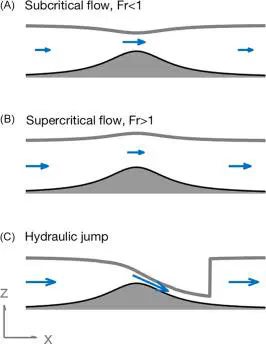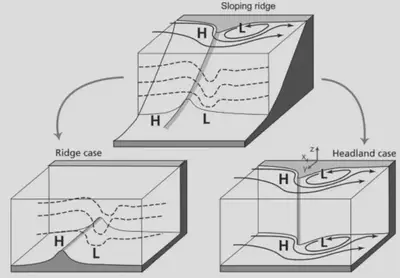 Fig. 4. Froude number regimes for flow over a ridge (black) where the gray lines indicate the position of the water surface, and the black lines the relative flow speed.
Fig. 4. Froude number regimes for flow over a ridge (black) where the gray lines indicate the position of the water surface, and the black lines the relative flow speed.
Abstract
This is a article on flow over topography named “Topographic eddies”. It covers the theory behind flow interactions with topography including islands, headlands and capes, sills and seamounts, as well as observational investigations of the same, and their influence on biology.

Reproduced from S. J. Warner, P. MacCready (2009). Dissecting the pressure field in tidal flow past a headland: When is form drag “real”? Journal of Physical Oceanography 39, 2971–2984. https://doi.org/10.1175/2009JPO4173.1.